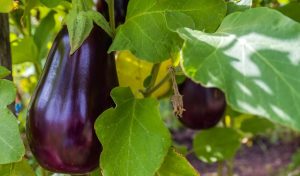If you’re looking for a plant that will add some beauty and interest to your garden, Nandina Domestica is a great option.
Also known as heavenly bamboo, nandina is an evergreen shrub that produces stunning red berries in the fall and winter.
Nandina is easy to care for and can thrive in both full sun and partial shade.
When planting Nandina, it’s important to choose the right spot. This shrub can grow quite large, so make sure you have enough space in your garden. Nandina also prefers full sun and well-drained soil, and likes to be kept out of strong, cold winds. Once you’ve chosen the perfect spot, simply dig a hole that’s big enough to accommodate the roots of your Nandina, mix in some compost and plant.

Where does Nandina Domestica come from?
Nandina domestica is native to eastern Asia, specifically China, Japan and the Himalayas.
It was introduced to western gardeners in 1804 and has been a popular landscaping plant ever since.
What varieties are there?
There are many different varieties of nandina domestica available, from low-growing groundcovers to large shrubs.
Some popular varieties include ‘Firepower’, ‘Gulf Stream’ and ‘Harvest Gold’.
[amazon box=”B01JGTYEOI” template=”horizontal” DESCRIPTION=” “]
How to plant Nandina Domestica
Planting Nandina is easy – just find a spot in your garden that receives full sun to partial shade and has well-drained soil.
Once you’ve found the perfect spot, dig a hole that’s big enough to accommodate the roots of your nandina plant.
Mix in some compost or organic matter to help the plant get established, then plant your Nandina and water well.
When do you plant Nandina Domestica?
Nandina can be planted at any time of year, although spring is best.
This will give the plant plenty of time to get established before winter.

How do you take care of Nandina Domestica?
Nandina is a low-maintenance plant that doesn’t require much care once it’s established.
Water Nandina regularly during the first growing season to help the plant get established.
After that, Nandina is quite drought tolerant and only needs watering during extended periods of dry weather.
Fertilize Nandina in early spring with a balanced fertilizer such as 10-10-10.
You can also add a layer of compost around the base of the plant in spring to give it a boosts.
Other than that, Nandina doesn’t need much care. It’s quite resistant to pests and diseases, and is also deer resistant.
When do you prune Nandina Domestica?
You can prune Nandina at any time of year, although it’s best to wait until early spring. This will give the plant plenty of time to regrow before winter.
To keep Nandina under control, simply prune back any wayward branches.
You can also cut Nandina back to the ground every few years to keep it from getting too large.
How often does Nandina Domestica flower?
Nandina flowers in late spring or early summer. The flowers are small and white, and they’re followed by clusters of red berries in fall and winter.

What is the best way to propagate Nandina Domestica?
Nandina can be propagated by seed, division or cuttings.
To propagate Nandina by seed, sow the seeds in a well-drained potting mix in spring.
Keep the soil moist but not wet, and wait for the seeds to germinate.
To propagate Nandina by division, dig up an existing plant in spring or early fall and divide it into several smaller plants. Replant the divisions immediately.
To propagate Nandina by cuttings, take 4-6 inch stem cuttings from a healthy plant in spring or early summer.
Dip the cuttings in rooting hormone, then plant them in a well-drained potting mix.
Keep the soil moist but not wet, and wait for the cuttings to root.
What are the benefits of Nandina Domestica?
Nandina Domestica is a beautiful plant that can add year-round interest to your garden.
It’s easy to care for and can tolerate a wide range of growing conditions.
Nandina also provides valuable food and shelter for birds and other wildlife.
What are the best growing conditions for Nandina Domestica?
Nandina is a hardy plant and will grow well in northern areas, tolerating temperatures as low as minus 23 degrees centigrade.
It prefers full sun to partial shade and well-drained soil.
Nandina is also salt tolerant, making it a good choice for coastal gardens.

How can I use Nandina Domestica in my landscape?
Nandina Domestica is a versatile plant that can be used in many different ways in the landscape.
It can be planted as a standalone specimen or in groups. It also makes an excellent hedge or privacy screen.
Nandina can even be grown in containers.
Where can I buy Nandina Domestica?
Nandina Domestica is widely available at nurseries and garden centers.
You can also purchase nandina online from a number of specialty retailers.
Final Words
Nandina Domestica is a beautiful, easy-to-care-for plant that can add year-round interest to your landscape.
It’s also a valuable food source for birds and other wildlife.
If you’re looking for a versatile plant that will thrive in almost any conditions, Nandina is a great choice.






